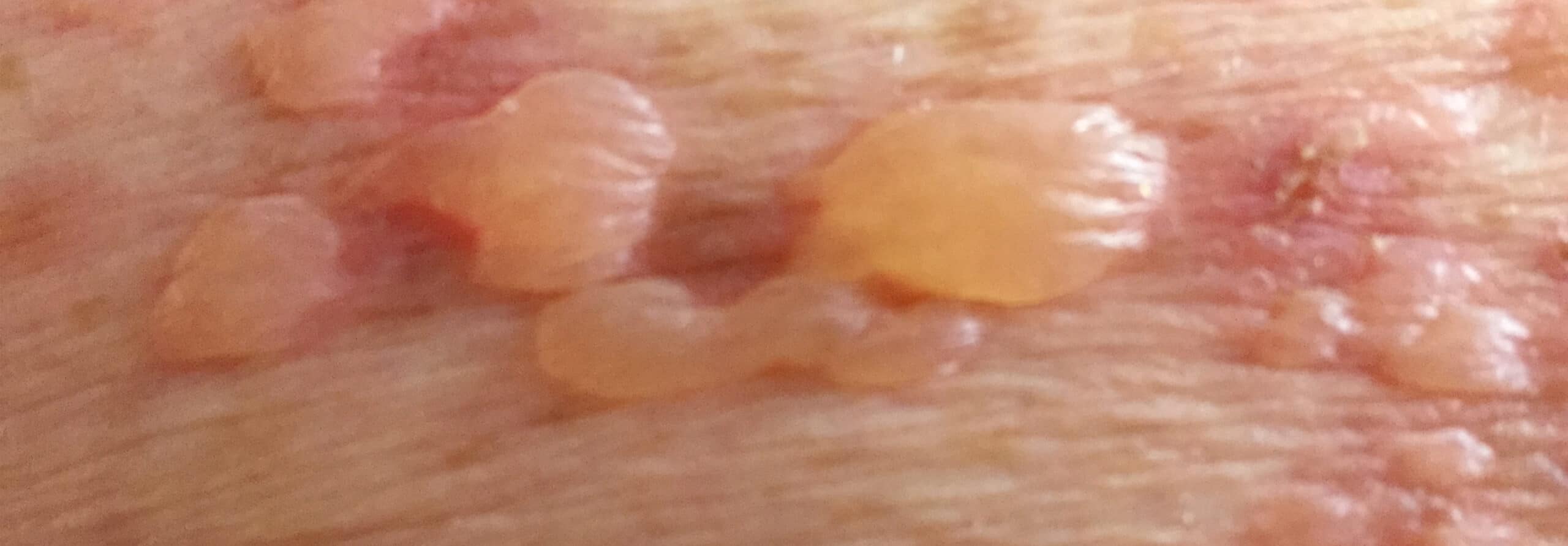Bullous Disease
MEDICAL DERMATOLOGY
What is Bullous Disease?
Bullous disease is a rare dermatological condition in which large, fluid-filled blisters appear in regions of the skin that are often flexed, such as the armpits. Sometimes referred to as bullous pemphigoid, this condition can often resolve on its own quickly but can sometimes take several years to resolve. It is related to an immune response in the body and appears in only 20,000 people on average per year in the U.S. In older individuals with poor health, this can be a life-threatening condition.
Signs and Symptoms of Bullous Disease
The signs and symptoms of bullous disease include:
- Itching skin for weeks before a blister forms
- The appearance of large blisters that don’t rupture easily near folds in the skin
- A reddish or brown rim around the blister
- A rash that resembles hives
- Small blisters in the mouth
If blisters develop on the eyes or show signs of infection, seek medical treatment as soon as possible.
What Causes Bullous Disease?
Bullous disease results from a malfunction in the immune system. In individuals who have this disease, the immune system, which typically produces antibodies to fight against virus or bacteria, creates an antibody in the fibroid tissue that connects the dermis to the epidermis. This triggers an inflammatory response which presents as itching and blisters.
Bullous pemphigoid appears randomly but certain things can trigger it, including:
- Medications
- Light and radiation
- Medical conditions such as MS or rheumatoid arthritis
How Bullous Disease is Treated
Treatment involves treating the skin so that it can heal and can also involve prescribed medications, including:
- Corticosteroids such as prednisone. Since oral options taken in the long term can cause side effects such as high blood pressure, patients may be prescribed a corticosteroid ointment to apply topically.
- Steroid-sparing drugs that inhibit the body’s production of white blood cells. Options include azathioprine (Azasan, Imuran), mycophenolate mofetil (CellCept), and rituximab (Rituxan).
- Anti-inflammatories such as methotrexate (Trexall).
Home remedies for bullous disease can include avoiding sun exposure and clothes that irritate the affected areas, as well as limiting activities that can slow or prevent healing.


